Alexander Hammett Marks correspondence and photographs
By JOL Admin | 12 August 2016

A highly significant First World War collection is the letters and photographs of Alexander Hammett Marks who served as a doctor with the Australian Army Medical Corps at Gallipoli and on the Western Front.
These records are part of a much larger collection relating to the Marks family of Brisbane who figured prominently in the social, scientific and medical spheres of Brisbane society from 1879 until the death of Dr Elizabeth Nesta (Patricia) Marks in 2002.
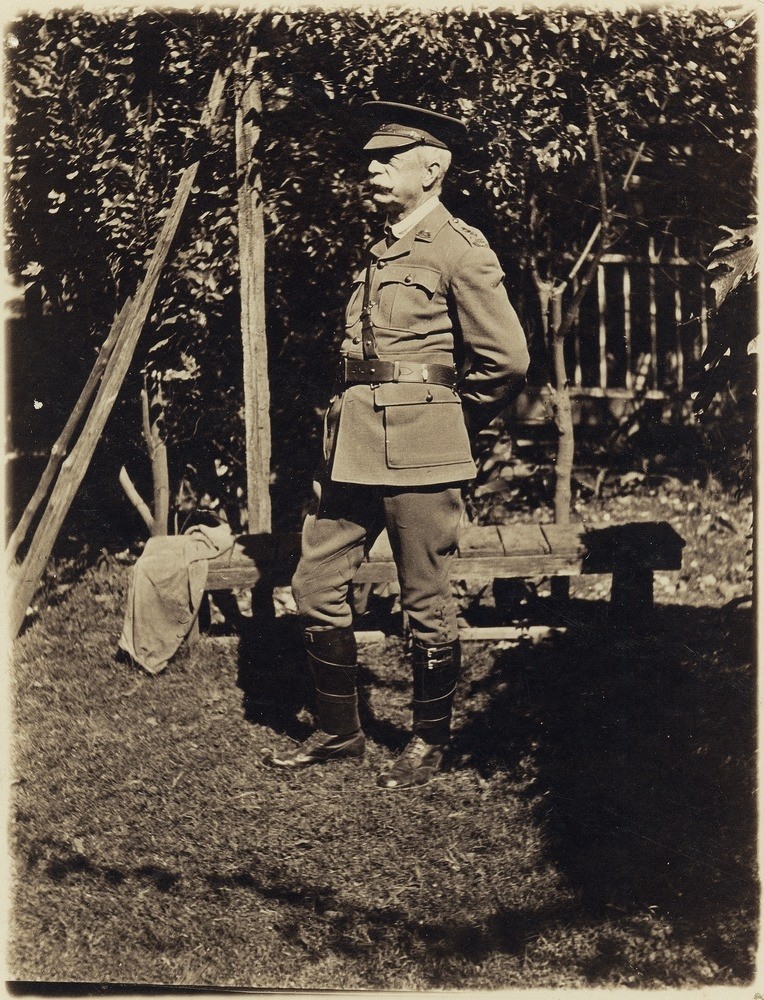
Lieutenant-Colonel Charles Ferdinand Marks, commandant of the 6th Australian Army General Hospital, Brisbane, 1915. Source: John Oxley Library, Accession 27331-3016-0153.
Charles Ferdinand Marks (1852-1941) emigrated to Queensland in 1879 where he had a distinguished career as a medical practitioner and politician. During World War I he served as the Commandant of the 6th Australian Army General Hospital at Kangaroo Point, Brisbane. His step-son, Joseph Espie Dods, and sons, Edward (Ted) Oswald Marks and Alexander (Alex) Hammett Marks, were all doctors who served during World War I.
The photographs below provide an intimate insight into life at Gallipoli in the early stages of the war.

Captain Joseph Espie Dods at his first dressing station at Gallipoli, Turkey, 1915. Source: John Oxley Library, Accession 27331-3016-0059.
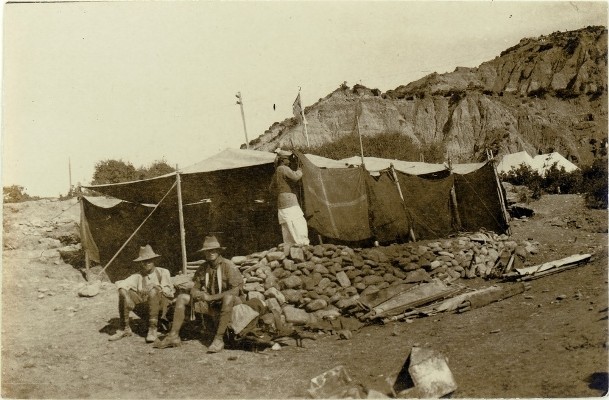
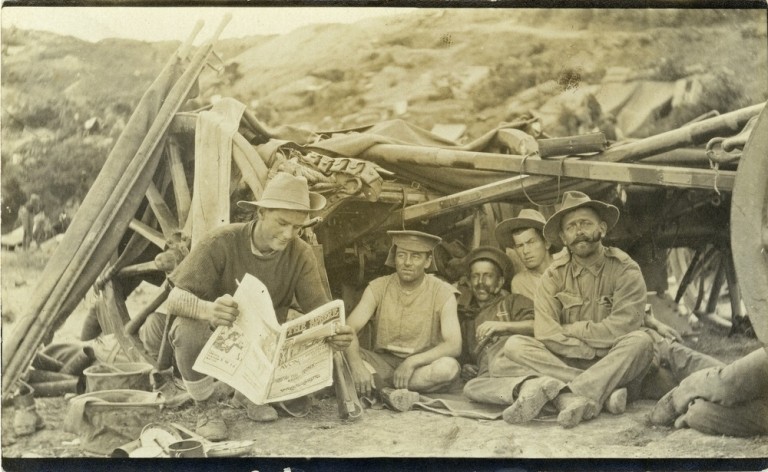
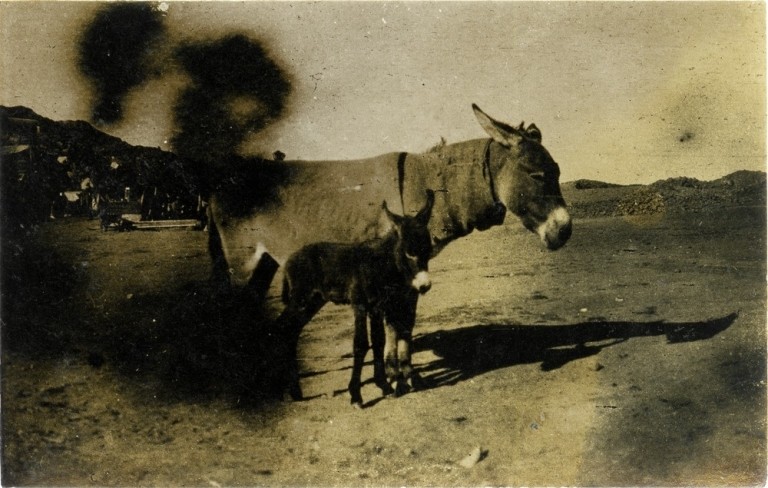
A wounded donkey (note the bandage around her neck) and foal at Gallipoli, Turkey, 1915. Source: John Oxley Library, Accession 27331-3016-0056.
Alexander Hammett Marks was born in Brisbane in 1880. He obtained his medical degree in Dublin and returned to Brisbane in 1904 where he practiced as a doctor. In 1911 he was appointed as a honorary captain in the Australian Army Medical Corps. He enlisted in the A.I.F. in 1914 and was posted as regimental medical officer to the 3rd Field Artillery Brigade, serving at Gallipoli from the first landing until the final evacuation.
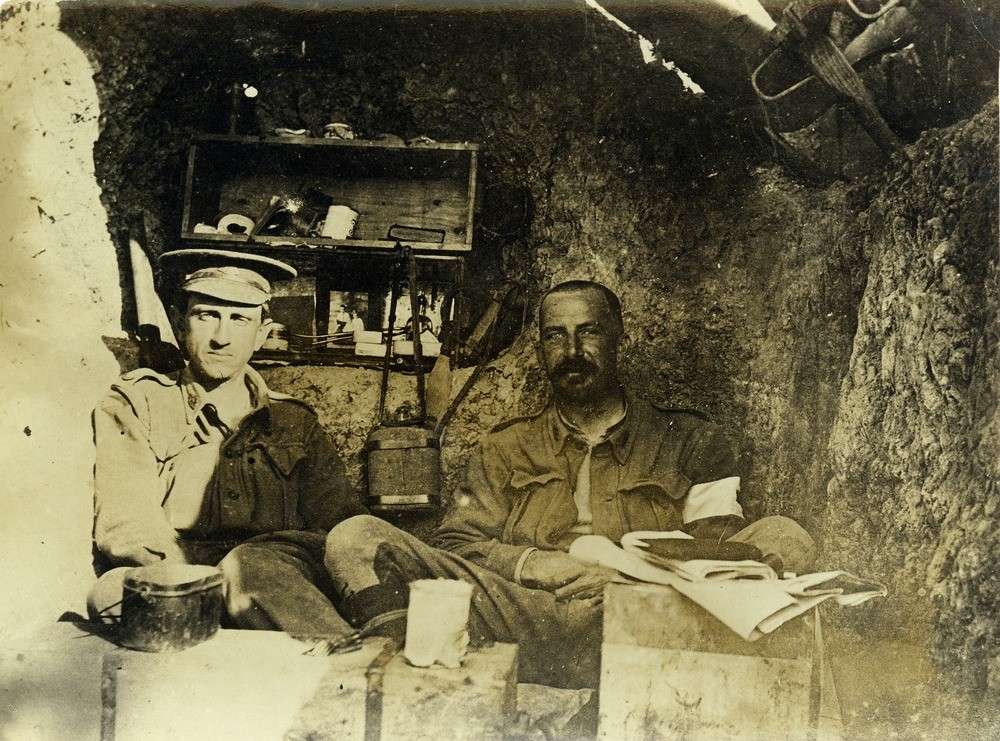
Alexander Marks was promoted to major in September 1915 and in February 1916 was appointed deputy assistant director of medical services of the 4th Australian Division where he served in France. In April of that year he was struck down with illness and was sent to the 1st Australian Stationary Hospital in Ismalia, Egypt, to have his appendix removed. The photograph below shows Major Marks recuperating in hospital.
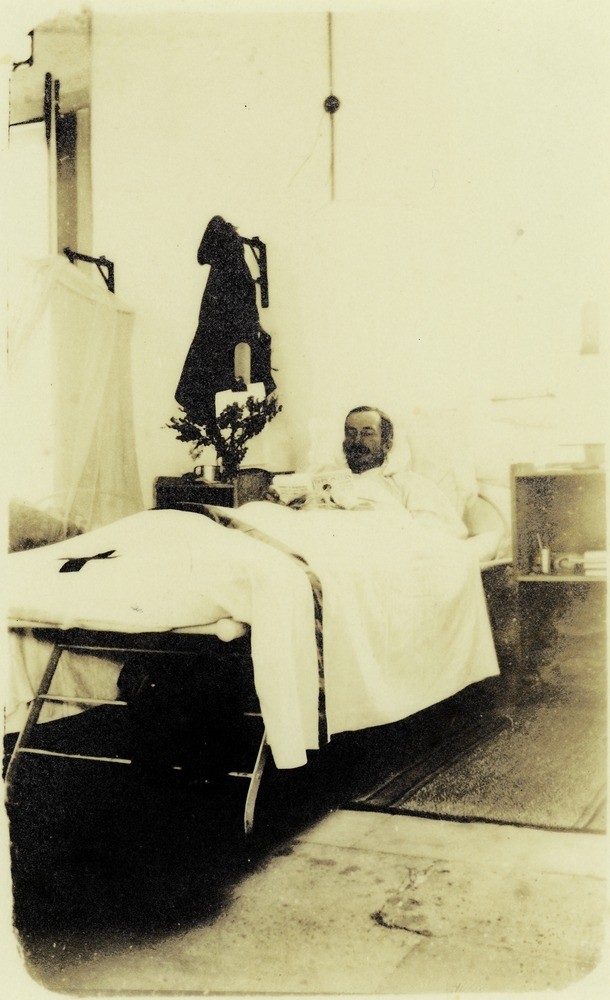
In December 1916 he was promoted to lieutenant-colonel commanding the 2nd Australian Field Ambulance. Subsequent appointments included forming and commanding the 16th Australian Field Ambulance in England, commanding the 1st Australian Casualty Clearing Station in France and in September 1918 he was appointed Colonel and Assistant Director Medical Services of the 1st Australian Division. Marks was twice mentioned in despatches and was awarded the Distinguished Service Order in 1916 and the French Croix de Guerre in 1918. He was appointed C.B.E. in 1919.
After the war he returned to Australia with his wife and children, who had lived in Ireland for the duration of hostilities, and with whom he had spent his periods of leave. During World War II he served as chairman and controller of the Voluntary Aid Detachment. Alex Marks died in 1954 of heart disease.
The Alex Marks World War I letters cover the period 1914 to 1919 and are mainly written to his father, Charles Ferdinand Marks, in Brisbane, Queensland. They cover Alex's service in Gallipoli from the landing to the evacuation, and on the Western Front, as well as the periods of leave he spent in Ireland with his wife, Loddie, and their children. His varied interests in botany, bird-watching and antiques are evident in his correspondence, as well as the practical matters of setting up hospitals in the middle of a field of war and the various medical cases he is called upon to treat. In the first letter he sends home from Gallipoli he writes of the landing on the 25th April 1915:
Audley and I are in a dugout on the side of a hill with four of the guns very close...We landed on Sunday about 1.30 so we can say we have been in it from the start. As we were not wanted in the Brigade just then we went to the base and helped with the wounded. There was a very unpleasant gun playing on the beach and we were under shrapnel practically all the time. In fact we landed just too late to catch two which burst on the beach. When you get the full details you will be proud of the country you have come to for I don't think anyone could have done better than the Australians did. Butler who was through the whole thing with the 9th did tremendously good work and everyone is loud in his praise...The first week on shore we had a dressing station on the beach and though we had few casualties from the Artillery we were able to do a lot of work for the Infantry. Monday and Tuesday we were kept very busy but after that the casualties got less. (13 May 1915, Accession: 27331/2960/2)
Correspondence relating to the Western Front is also fascinating. The ebb and flow of the various battles is reflected in the numbers of wounded flooding into the hospitals and clearing stations. On the 8th September 1918 Marks wrote "Friday we got a few patients and yesterday 190, about 130 big surgical ones so you see we have had a pretty strenuous week". (27331-2963-0033)
The following plan of the 1st Australian Casualty Clearing Station in France was drawn by Alex Marks and included in a letter written on the 31st March 1918 to his father. It shows the layout of the clearing station which had been moved 8 miles to a new location.

Source: John Oxley Library, Accession 27331/2963/10.
The Marks Family collection, Accession 27331, comprises around 4000 letters, 195 diaries, 34 photograph albums and hundreds of glass negatives, as well as other objects, postcards, and various ephemeral items, providing a fascinating and comprehensive insight into an eminent Queensland family and the society in which they lived. The collection is available at the John Oxley Library. The Alexander Hammett Marks World War I photographs and letters are available online at: http://onesearch.slq.qld.gov.au/SLQ:OM:slq_alma21168504630002061
Lynn Meyers, QANZAC100 Content Curator
Comments
Your email address will not be published.
We welcome relevant, respectful comments.